Related Research Articles
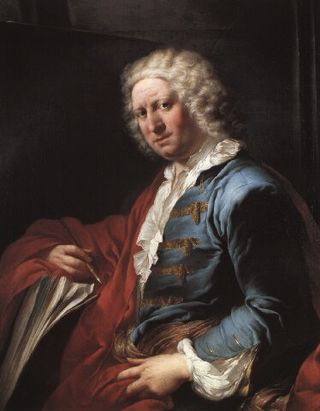
Giovanni Paolo, also known as Gian Paolo Panini or Pannini, was an Italian painter and architect who worked in Rome and is primarily known as one of the vedutisti. As a painter, Panini is best known for his vistas of Rome, in which he took a particular interest in the city's antiquities. Among his most famous works are his view of the interior of the Pantheon, and his vedute—paintings of picture galleries containing views of Rome. Most of his works, especially those of ruins, have a fanciful and unreal embellishment characteristic of capriccio themes. In this they resemble the capricci of Marco Ricci. Panini also painted portraits, including one of Pope Benedict XIV.

Giovanni Battista Castello was an Italian historical painter.

Asciano is a comune and hill town in the province of Siena in the Italian region Tuscany. It is located at the centre of the Crete senesi between the river Ombrone and the torrent Copra, some 30 kilometres (19 mi) southeast of the town of Siena by rail.
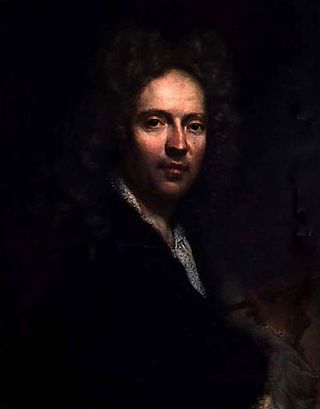
Niccolò Cassana was an Italian painter born in Venice and active during the late-Baroque. His older brother Giovanni Agostino Cassana was also a painter.

Matteo di Giovanni was an Italian Renaissance artist from the Sienese School.
Giovanni Maria Galli (1625–1665), called Giovanni Maria da Bibiena, was an Italian painter, born at Bibiena in 1625. He studied under Albani, and his productions have often been mistaken for those of his master. He died in 1665. Of his larger works in the churches at Bologna the following are the most esteemed: The Ascension, in the Certosa; St. Anne, in Santa Maria della Carità; St. Andrew, in San Biagio; and St. Francis of Sales, at the Padri Servi. This artist was the founder of a family of whom no fewer than nine are known to fame, all of whom bore the surname of Bibiena.

Giovanni Battista Lama (1673–1748) was an Italian painter of the Baroque period, active mainly in Naples. He primarily painted historical canvases. Along with Paolo de Matteis, he was pupil to the painter Luca Giordano. In turn, the painter Antonio Capulongo was his pupil.

Giovanni Biliverti was an Italian painter of the late-Mannerism and early-Baroque period, active mainly in his adoptive city of Florence, as well as Rome.
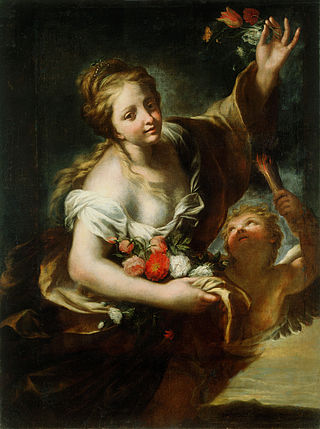
Andrea Carlone was an Italian painter of the Baroque period, active mainly in his natal city of Genoa.
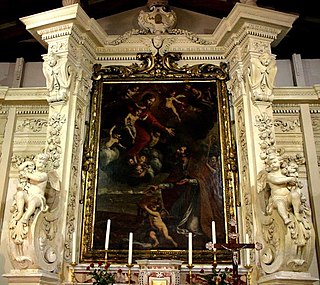
Giovanni Quagliata (1603–1673) was an Italian painter of the Baroque period. He is more properly known in Italy as Giovan Battista Quagliata, one of the leading artists of the Messinesi painters of the 17th century, as described by Francesco Susinno in his book "The Lives of the Messinesi Painters" published in 1724. Giovanni was born in Messina, Italy. He was a pupil of Pietro da Cortona and enjoyed the patronage and friendship of the Spanish Viceroy of Sicily, Don Juan José of Austria. Giovanni's brother, Andrea Quagliata, was also an historical painter, but of lesser significance. Giovanni's works – paintings, frescoes and large canvases – were famously displayed in the galleries and churches of Messina, but due to earthquakes from Mount Etna and wartime bombings, few have survived to the present day.
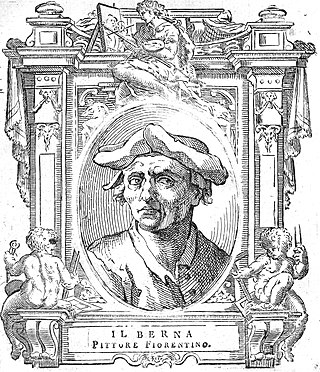
Barna da Siena, also known as Berna di Siena, was presumed to be a Sienese painter active from about 1330 to 1350.
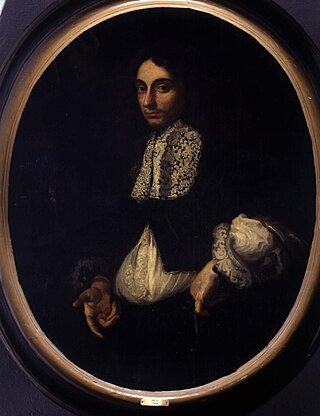
Giovanni Bernardo Carbone was an Italian painter of the Baroque period.

The Master of the Osservanza Triptych, also known as the Osservanza Master and as the Master of Osservanza, is the name given to an Italian painter of the Sienese School active about 1430 to 1450.
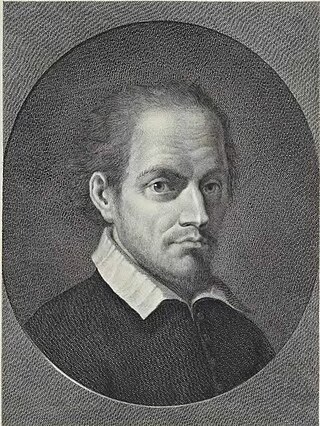
Giovanni Alberti was an Italian painter, known for his perspective painting (quadratura). He was also a poet and writer about art critic.

Benedetto Rusconi, nicknamed the Diana, was an Italian Renaissance painter, a companion of Vittore Carpaccio and Giovanni di Niccolò Mansueti, who lived in the latter part of the 15th and early part of the 16th centuries. No date can be given of his birth.
Francesco Nasini was an Italian painter of the Baroque period, active mainly in towns outside of Siena, Italy.

Bernardino Galliari (1707–1794) was an Italian painter, active mainly as a scenic designer and decorator of theaters.

The Ferrovia Asciano–Monte Antico is a railway line linking the town of Asciano to Monte Antico in the municipality of Civitella Paganico in Southern Tuscany.

Pievina is a village in Tuscany, central Italy, in the comune of Asciano, province of Siena. At the time of the 2018 parish census its population was 97.
References
 This article incorporates text from a publication now in the public domain : Bryan, Michael (1886). "Asciano, Giovanni d'". In Graves, Robert Edmund (ed.). Bryan's Dictionary of Painters and Engravers (A–K). Vol. I (3rd ed.). London: George Bell & Sons.
This article incorporates text from a publication now in the public domain : Bryan, Michael (1886). "Asciano, Giovanni d'". In Graves, Robert Edmund (ed.). Bryan's Dictionary of Painters and Engravers (A–K). Vol. I (3rd ed.). London: George Bell & Sons.